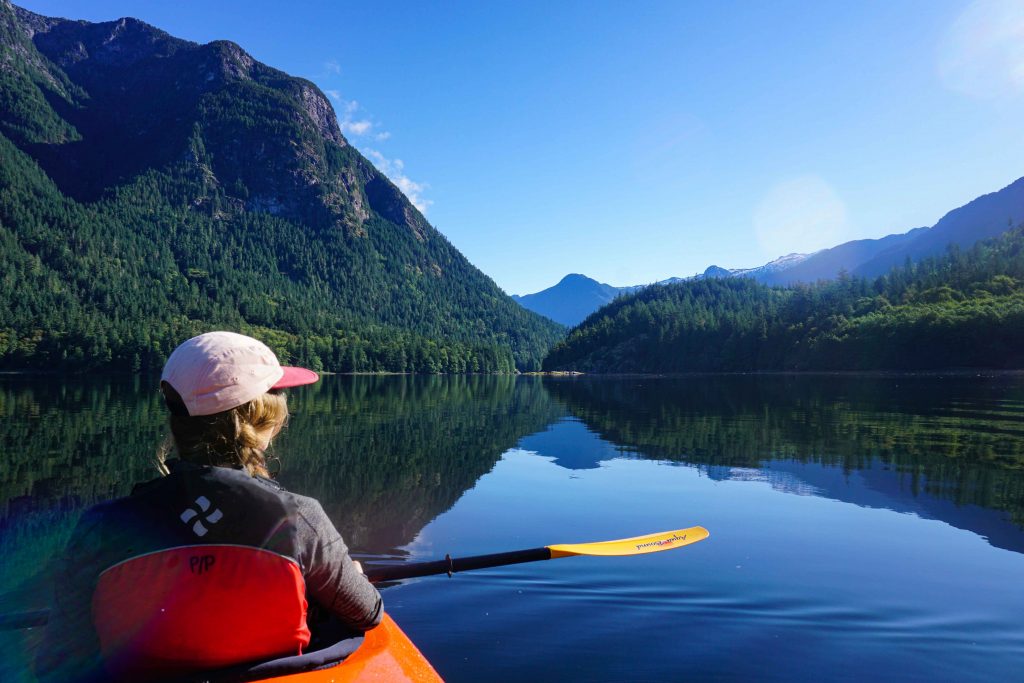When the winter months roll around, it’s all too easy to give up on your week-day activities. There are precious few daylight hours, and these are typically consumed by the working day. The oh-so very long nights seem like a bar to staying active.
But it doesn’t have to be that way. There’s no reason why you shouldn’t stick to your normal routine. You can still hit the trails in the early mornings or evenings – even if it’s dark outside. This has so many benefits, both for your mental and physical health.
So, before you hang up your boots or put your bike away, please read on. There are ways to defy winter and turn yourself in a four-season hiker, trail runner or mountain biker. Here’s how.
Invest in good lights
Good quality lights are your number one tool for getting out after dark. For hiking and trail running, you’ll want a head torch. For mountain biking, you’ll need a light for both your helmet and your handlebars. The more lumens the better! Most are rechargeable these days. Just remember to recharge them after each and every outing. You don’t want the lights to go out mid-run, ride or hike.
Be seen
If you’re on the roads, then it’s absolutely vital that other road users can see you. Wear brightly coloured clothes, light yourself up like a Christmas tree and place reflective straps around your wrists and ankles. Although you probably won’t encounter many vehicles on the trails, it’s still beneficial to be seen. Firstly, you won’t alarm other trail users. (There’s nothing more disconcerting than a panting shadow heading in your direction). Secondly, you’ll be easier to find, should anything happen.
Wear layers and warm clothing
For most people, winters are cold and wet, with non-daylight hours adding an extra chill to the equation. Invest in waterproof pants for mountain biking, or warm leggings for running and hiking. Wear layers, and take more to the trail with you, just in case you get cold. Pay extra attention to your hands and feet which often continue to suffer, even once you’ve started to work up a sweat. Consider buying some winter gloves and cold weather waterproof socks.
Related: Kit Review – Sealskinz Waterproof All Weather Mid Length Sock
Stick to trails you know
It’s amazing how different everything looks in the dark. You can miss way markers, overlook junctions and lose the trail altogether. So, stick to trails that you know well. Don’t attempt to ride something you’ve never done before, or run or hike a new route. By keeping to familiar places, you’ll know where to go and what features you’re going to encounter. This limits your chance of injury and ensures you won’t get lost.
Ditch the headphones
When your vision is reduced, you come to rely on your other senses, particularly your sense of hearing. With this in mind, it’s a good idea to ditch the headphones. That way, you are more aware of the hazards around you, be it another person trying to overtake you, a creek, a vehicle or an errant dog.
Slow down
Even with lights, your field of vision is limited. This means that you only see objects when you’re close to them. To prevent any collisions or falls, it’s wise to slow down. Don’t worry about getting a personal best for now. Just be glad that you’re out and about. And anyway, it probably won’t feel like you’ve reduced your pace thanks to a phenomenon called the ‘optic flow influence’. This makes it seem as though your surroundings are passing quickly in the dark, making it feel as though you’re moving faster than you really are.
Take a friend
Lots of people find the trails eerie in the dark. Fair enough. It can be easy to spook yourself or panic over the slightest noise. Personally, I love the forest at night-time. It’s so quiet and peaceful. But I’m certainly not immune to an over-active imagination, and my thoughts often turn to bears, cougars and creepy goings-on. The solution? Take a friend. Hell, take a few friends. Or join a local club. As the saying goes, there’s strength in numbers. This is especially true for ladies and anyone else who feels vulnerable. It’s also great motivation if you’ve arranged to meet someone, as you’re much less likely to bail at the last minute.
Leave a trip plan
Whether or not you drag a friend along with you, you should always leave a trip plan. This might sound excessive for a few after-work laps or a quick run. But you never know when something might happen. You could get lost or hurt yourself. Always tell someone where you’re going, including what trails you’re going to run, ride or hike. Once you’re out, stick to the plan, so long as it’s safe to do so.
Take a satellite communications device
Take a phone, but remember, there might not be any signal and batteries usually die quickly in the cold weather. So for an added layer of safety, consider taking a satellite communications device with you. There are lots of options out there. Some let you send a pre-set message to a friend or family member. Others alert a designated contact if you’ve fallen and remained immobile.
Remind yourself – it will be fun!
When it’s dark, cold and wet outside, it can be very tempting to stay indoors. Of course, if there’s a blizzard or storm howling outside, then this is a wise choice. But if it’s just a bog-standard winter’s day, try to find ways to motivate yourself. You might meet up with a friend or treat yourself to something special afterwards, such as a hot bath. I like to remind myself just how much better I’ll feel for getting outdoors and doing something I love.
So go on, I dare you – don’t be afraid of the dark. Get out and hit the trails this winter. You’ll be glad you did.





